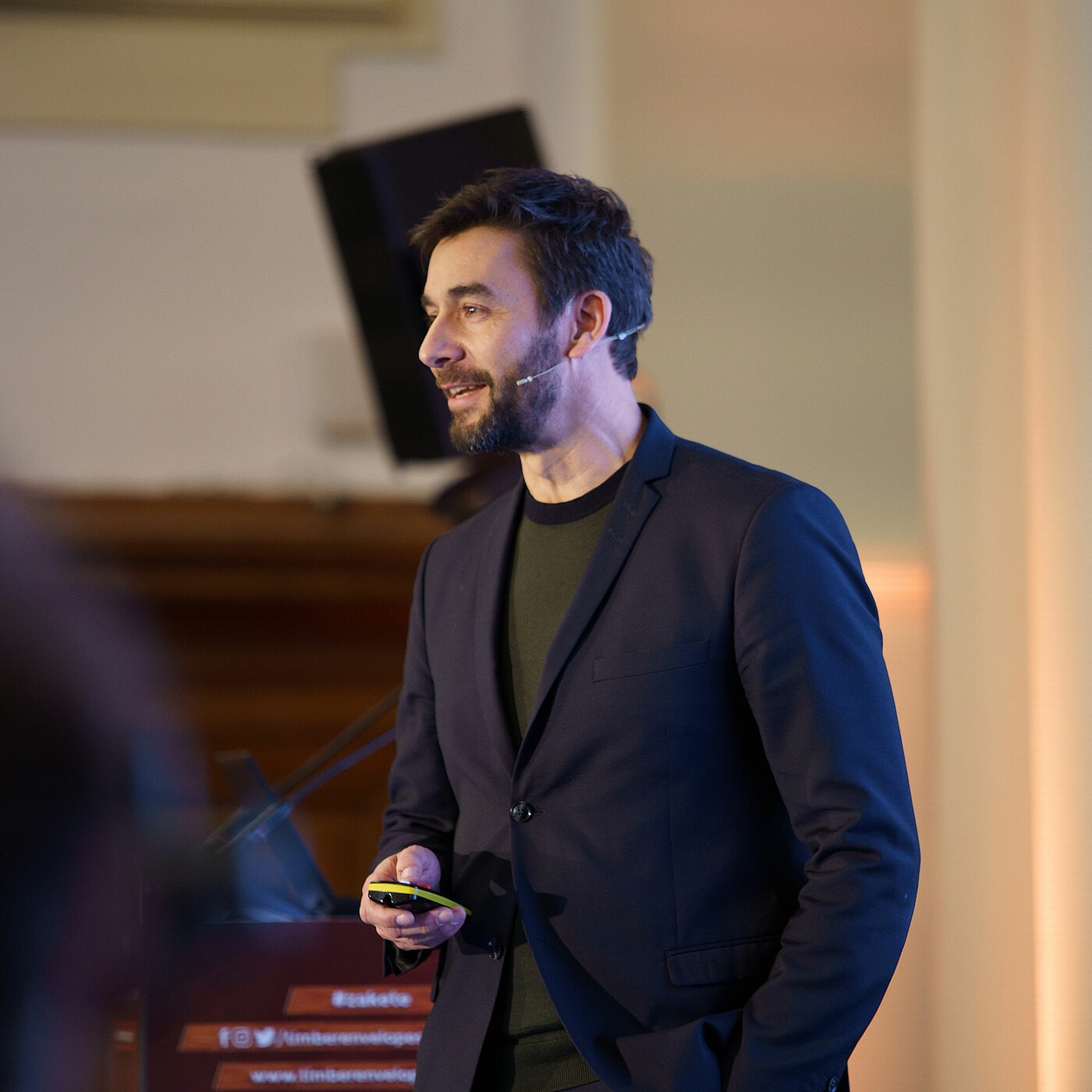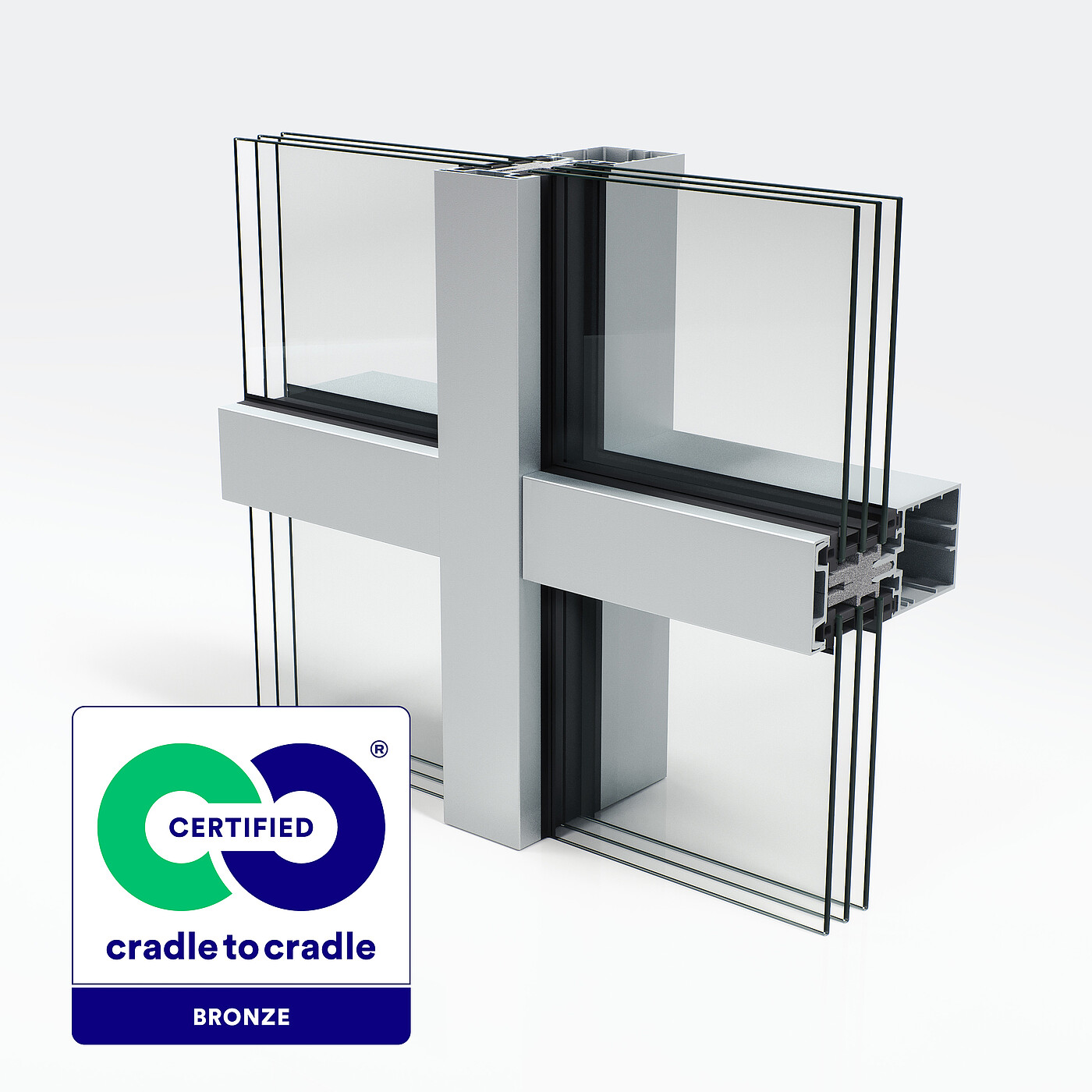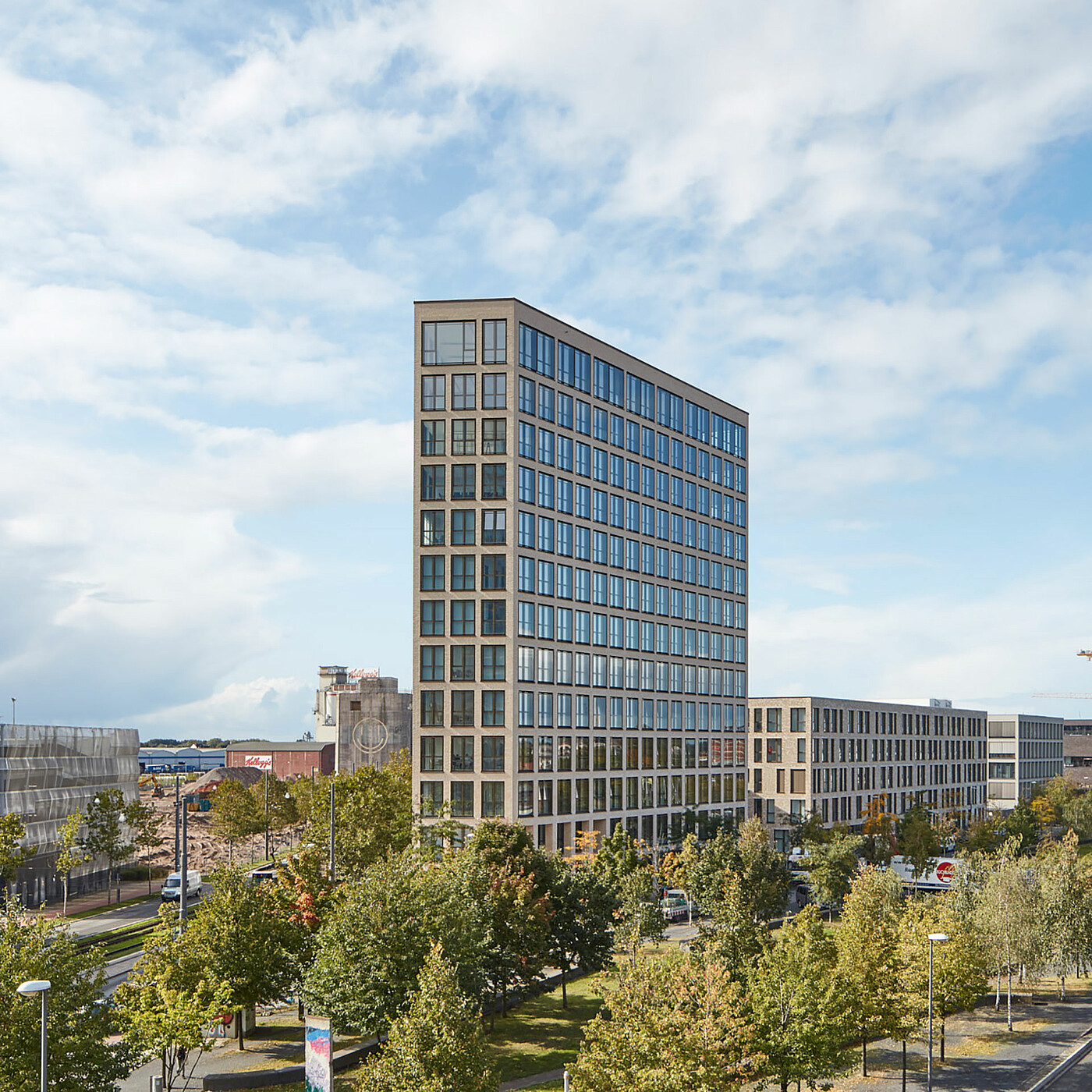With its pilot project, the first Cradle to Cradle Certified® facade system, Gutmann Bausysteme has ushered in a new era of future-oriented sustainability, both within the company and the product range: a time frame scaled towards sustainable, trustworthy longevity as opposed to quick marketing successes. In an interview, Max Radt, Sales Director Aluminium Systems & International Projects at Gutmann, explains what is behind it and tells us about the prospects for the future.
Europe is looking to become the world’s first climate-neutral continent by 2050. In Germany, the new Climate Change Act has set an even more ambitious target: the Federal Republic is planning to be climate-neutral five years earlier, by 2045. With that in mind, looking at Gutmann Bausysteme, what are the company’s sustainability goals for the future? And what steps will be shaping the sustainability strategy over the coming years?
Sustainability is always at its most efficient when it is part of the process from the very start. That is why at Gutmann Bausysteme our goal is to start our sustainability strategy at the earliest possible point in our production process, i.e. during product development. Previously, that was the time when we would focus on topics such as compliance with standards, statics, durability and longevity, user and assembly friendliness, or market potential and economic calculations. While these issues are, of course, still important, sustainability will also have to be consistently considered as a separate topic in our future specifications. And this is by no means just about the aluminium elements we produce ourselves. Instead, we will be looking at the bigger picture: we buy in addition a wide variety of components for our products, each made from an equally large variety of materials. In addition, to assemble our systems you also need a number of other materials that we do not supply ourselves, but which still have to be included in the overall sustainable design of a product. Another important issue is that we need to ensure the highest possible degree of prefabrication for our products. It makes the work on the construction site as efficient, and therefore as sustainable, as possible. Last but not least, economically reducing the number of components and the amount of material we use, and ensuring the simplest and lightest possible design of our products, makes a significant contribution to their sustainability.
One of the most important points that informed our decision was the fact that common sustainability certifications in the construction industry, such as the US LEED rating, the British BREEAM rating, the French HQE certification, or the German DGNB rating, evaluate the sustainability of entire buildings. Cradle to Cradle Certified®, on the other hand, allows us to directly certify the sustainability of our products, making it much more meaningful for us than the overall rating of the building that we can only contribute a certain amount to. At the same time, the extremely complex and comprehensive Cradle to Cradle Certified® process forces us, in a very positive and productive way, to think about many interrelated issues at the same time. This type of certification thereby triggers a snowball effect across our entire product development process. Initially, we are starting with one pilot project, before certifying other products in our Cradle to Cradle Certified range over time. I consider Cradle to Cradle to be a very valuable principle that has been guiding me for about two decades, even going back to when I was an architect. That is why the current transformation at Gutmann, which is seeing us move from a linear economy to a consistently sustainable circular economy, is also very important to me personally. After all, Cradle to Cradle Certified is more than just a certificate: it means a fundamental and comprehensive rethinking process that will make our company all the more future-proof over the coming decades in terms of European and global climate targets.
We kicked off our Cradle to Cradle Certified pilot project with our Gutmann GCW 050/060 facade system. It is a mullion and transom system that uses relatively few components, making it fairly simple to assemble and just as simple to disassemble. As a consequence, recycling the components is also fairly straightforward. GCW 050/060 is also the system with the highest aluminium content in our product range. As part of our pilot project, that allowed us to highlight our main theme very well, which is, of course, aluminium. In addition, we only recently extensively revised and relaunched GCW 050/060, making it an almost entirely new product. So, the technological relaunch was simultaneously paired with a sustainable relaunch. Another important aspect that makes it a particularly good candidate for Cradle to Cradle Certified®: we produce and supply a particularly large volume of aluminium for the system, which means we also process an equally large amount of it. In addition, we have designed a variant based on this system as a mullion and transom system, but using both wood and aluminium. We are setting it up to get a certificate in a second step as well. Using wood with aluminium is a topic that will be especially important for us in the future. As such, the findings from the certification process are set to provide essential support for us to focus even more on the very promising topic of wood with aluminium over the coming years.
What is particularly valuable about the Cradle to Cradle certification process, for example, is its wide range of facets: it examines topics like material health just as much as the material cycle, renewable energies, the water cycle or social responsibility. Another interesting area of the Cradle to Cradle certification process is the fact that it is primarily aimed at the future of the materials used. DGNB or BREEAM, for example, explicitly require that a certain proportion of materials be used which have already been recycled. With the future recyclability of the materials that are being used being the decisive factor, Cradle to Cradle Certified essentially goes about it the other way around – and that is where aluminium, with its virtually unlimited recyclability, rates particulary well. That is because aluminium is essentially never lost: with a recycling rate of up to 95%, most of the aluminium ever produced in the world is still in use.
That said, so far the construction industry is not among those most interested in sustainability certifications. Instead, it is primarily the investors and property developers right now, since sustainability certifications, on the one hand, make it easier to get financing and, on the other hand, also make it easier to market buildings for their superior quality. We need to keep in mind, though, that sustainability certification is still a relatively new topic. As such, we neither have one hundred per cent sound knowledge for now, nor is there total transparency, or even uniformity. Nevertheless, we are living in a time that is seeing these different worlds of certification systems gradually beginning to communicate with each other. And since it does not start with the evaluation of the building, but much further upstream in the overall process with the base at product level, Cradle to Cradle also offers the opportunity to make a valuable contribution to more reliability and transparency in building certification as a whole. In the future, Cradle to Cradle Certified® products like ours will be able to help a building achieve, for example, a LEED, BREEAM or DGNB rating in an even simpler and more transparent way. And, as far as our positioning is concerned, we are also profiting immensely as a company since the sustainability know-how we have gained through the certification process allows us to support our customers very efficiently. The result is that we can deliver real and ever more added value in the future.





